US military, technology, arms, tactics
Re: US military, technology, arms, tactics
Pardon me if this has been posted before....
Pentagon is working on killing drones
https://www.defensenews.com/digital-sho ... e-threats/
Pentagon is working on killing drones
https://www.defensenews.com/digital-sho ... e-threats/
Re: US military, technology, arms, tactics
A great illustration of how complex and expensive even a limited layered ICBM defense capability can be -
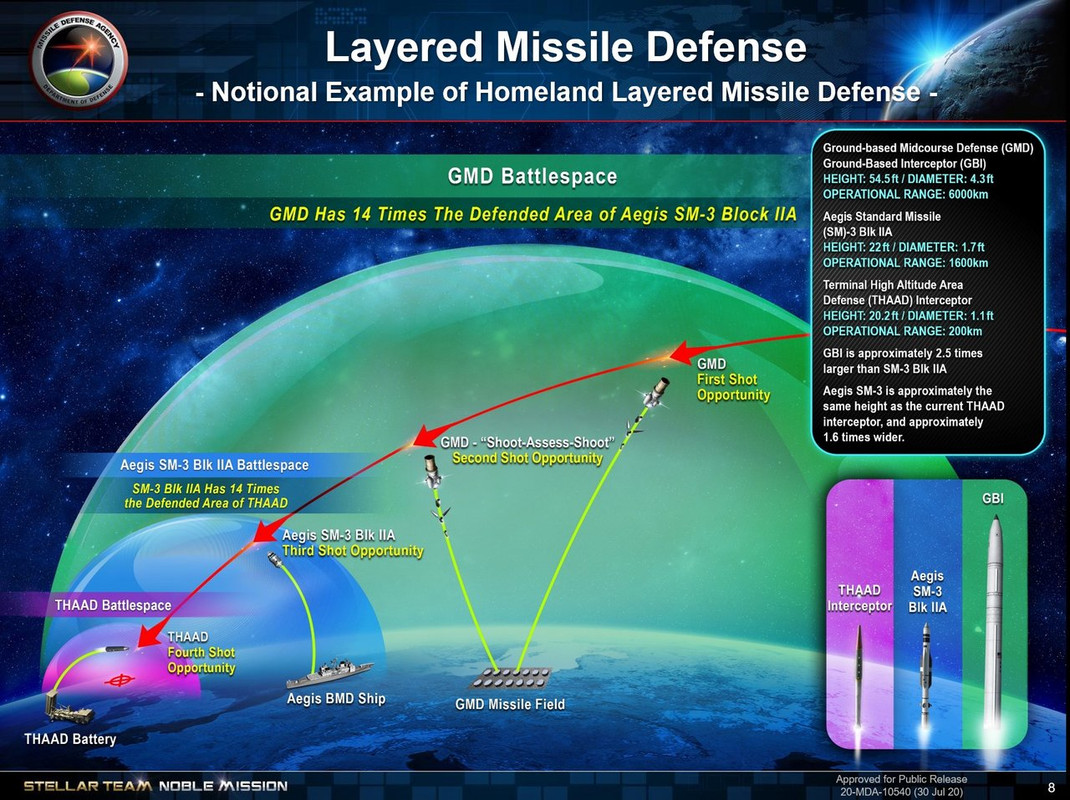

Re: US military, technology, arms, tactics
SEAL Team Six Executes Long Distance Rescue Operation Of Kidnapped American In Nigeria
The aerial operation consisted of multiple special operations command and aerial refueling aircraft which were all forward deployed to NAS Rota, Spain for the operation. These included four MC-130Js callsigns PINCH41-44, four CV-22s callsigns JOLT31-34, one AC-130J callsign RCH1009, one P-8A callsign MN801, and six KC-135Rs callsigns QID636/638-642. All of the aircraft flew south over Africa down to a task area near Niger or Nigeria.
Re: US military, technology, arms, tactics
It is always difficult to keep an operational system in the dark (it gets very expensive and begins to incur training costs as well) but if someone did INDEED capture the RQ-180 out in the open, over Edwards, in broad daylight then that would suggest that this program has now been downgraded in terms of classification and we will begin to see a lot of these now that the first squadron is apparently operational and that these are flying out of Beale.
Possible Photo Of Highly Secret RQ-180 Aircraft Surfaces Online
Article behind a Paywall -
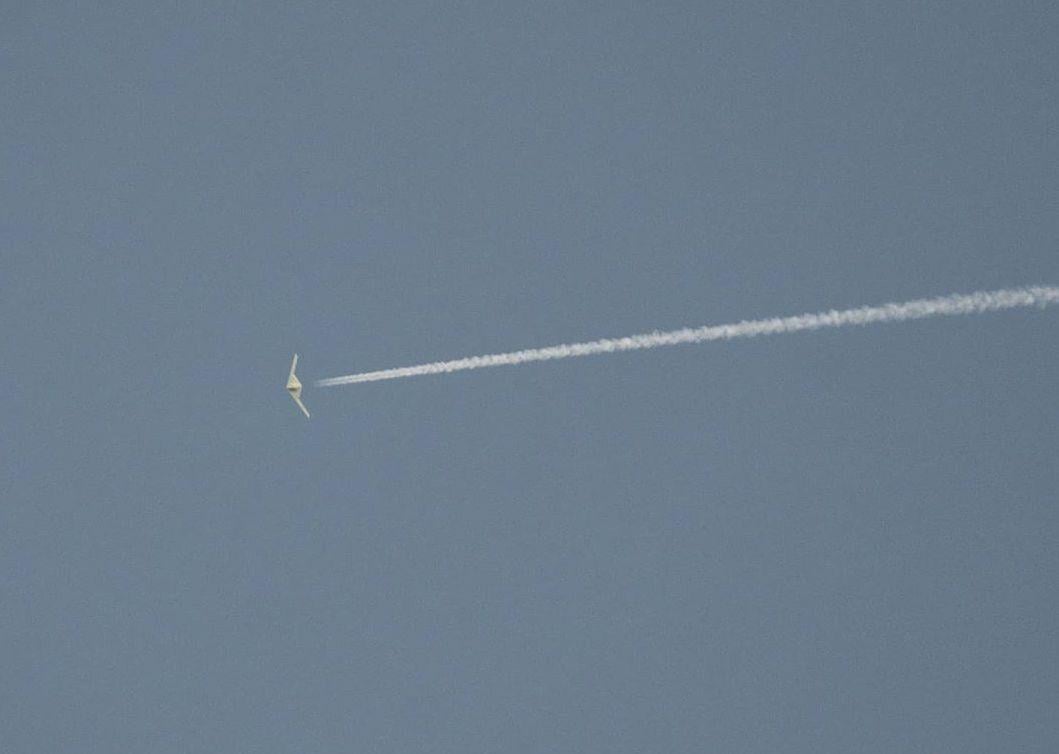
Possible Photo Of Highly Secret RQ-180 Aircraft Surfaces Online
Article behind a Paywall -
A picture has surfaced showing a new aircraft generally matching Aviation Week’s understanding of the shape of what is commonly known as the RQ-180 unmanned aircraft system (UAS). Aviation Week...

Last edited by brar_w on 02 Nov 2020 06:32, edited 5 times in total.
Re: US military, technology, arms, tactics
Lol. Is this a special operation or a complete invasion?brar_w wrote:SEAL Team Six Executes Long Distance Rescue Operation Of Kidnapped American In Nigeria
The aerial operation consisted of multiple special operations command and aerial refueling aircraft which were all forward deployed to NAS Rota, Spain for the operation. These included four MC-130Js callsigns PINCH41-44, four CV-22s callsigns JOLT31-34, one AC-130J callsign RCH1009, one P-8A callsign MN801, and six KC-135Rs callsigns QID636/638-642. All of the aircraft flew south over Africa down to a task area near Niger or Nigeria.
Jokes aside this only shows how the complexity of special operations has increased. Kudos to SOCOM/JSOC for pulling this off. Respect.
Re: US military, technology, arms, tactics
When you have to conduct combat operations around 9,000 km from your home you kind of have to bring everything that you may end up needing including long range refueling, command and control, CAS, SAR etc. And of course backup and backup to the backup because you don't have the luxury to change things around in case you need to insert a larger troop footprint or if something goes wrong with refueling aircraft, your CAS or other command and control support. Unfortunately, John Rambo with his longbow does not suffice these days 
Re: US military, technology, arms, tactics
brar_w wrote:It is always difficult to keep an operational system in the dark (it gets very expensive and begins to incur training costs as well) but if someone did INDEED capture the RQ-180 out in the open, over Edwards, in broad daylight then that would suggest that this program has now been downgraded in terms of classification and we will begin to see a lot of these now that the first squadron is apparently operational and that these are flying out of Beale.
Possible Photo Of Highly Secret RQ-180 Aircraft Surfaces Online
Article behind a Paywall -
A picture has surfaced showing a new aircraft generally matching Aviation Week’s understanding of the shape of what is commonly known as the RQ-180 unmanned aircraft system (UAS). Aviation Week...
Guy Norris reports that the aircraft has been painted in a lighter shade (perhaps indivicative of its very high (U2 esque) expected ceiling ) and is nicknamed "Shikaka" from the bat in Ace Ventura -
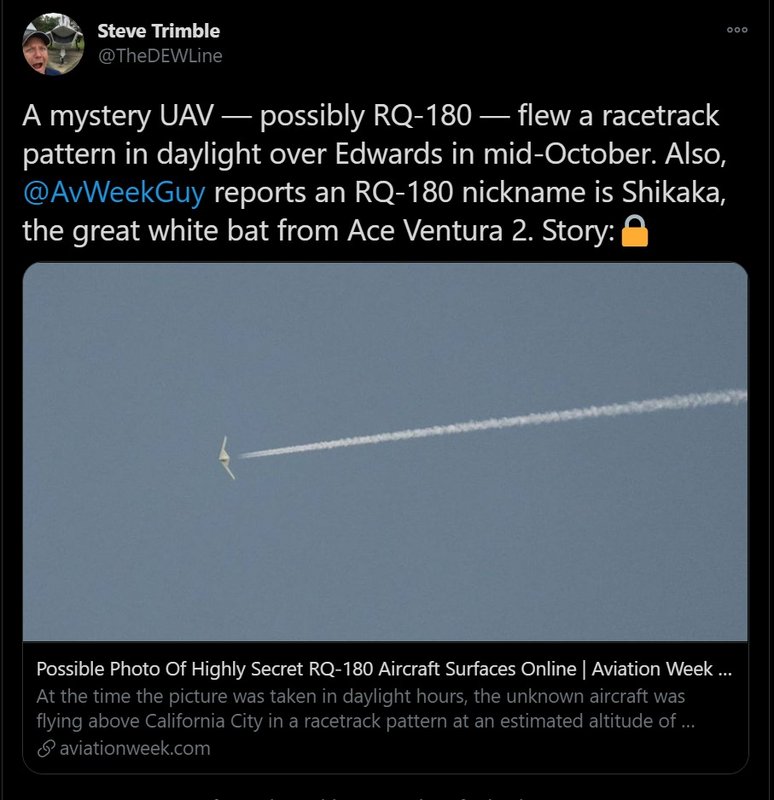
Re: US military, technology, arms, tactics
I know Rakesh doesnt like quoting images but this helps me perfectly understand why hypersonic vehicles have advantages over ballistic missiles and answers my earlier query on missile thread. Thank you brar_wbrar_w wrote:A good reference for H-BGV trajectories and flight profile (though it doesn't show skip) -
Also answers why K-15/B-5/Shaurya flies depressed trajectory.
Re: US military, technology, arms, tactics
Wouldn't this drawback be negated by having a powerful AWACS? You could datalink BMD missiles to AWACS, if required to shoot it down.
Hypersonic do have advantages though. In future I expect ICBM to be lighter and smaller. You need a booster to fly 100KM high, instead of 1000+KM.
Hypersonic do have advantages though. In future I expect ICBM to be lighter and smaller. You need a booster to fly 100KM high, instead of 1000+KM.
Re: US military, technology, arms, tactics
Experts who have described H-BGV's and have worked in the field describe the difference in them and depressed trajectories of BM's, or quassi BM's in general is that these things present a lot more target ambiguity and fly a unique trajectory. Rather than flattening the trajectory at the very edge of the atmosphere (off the minimum energy ballistic path that a depressed trajectory profile may follow) these vehicles (BGVs) penetrate to as low as 50 km in altitude and can then do positive AOA pull ups at very high speeds to gain altitude and use that to regain cruise speed and stay above hypersonic. And do this repeatedly in their cruise phase in such a way that they glide for more than 50% of their duration. So think of a 3-4K km (with a 1500-2000 km cruise phase) weapon. Even if you can detect its launch there is no way you can get the PIP that early using ground radars. They separate so early and then have such a long cruise duration that your early guess on target could be Tehran and it may end up striking Islamabadtsarkar wrote: Also answers why K-15/B-5/Shaurya flies depressed trajectory.
With an AWACS the envelope to detect (assent), track and target would be so small that not even all the AWACS in the USAF and USN's combined inventory could get the job done given all the potential targets of a conventional hypersonic BGV (the one threat that is most pressing). Even if 100% of the fleet focused on just this one mission. But your idea is right though. Elevated sensors will be more effective relative to terrestrial sensors. You just need to get higher in altitude to expand your envelope and because of the unique characteristics of these vehicles (RF and IR signatures) it is more efficient to look down at them.nam wrote:Wouldn't this drawback be negated by having a powerful AWACS? You could datalink BMD missiles to AWACS, if required to shoot it down.
See this -
viewtopic.php?f=3&t=7088&start=1760#p2464414
Last edited by brar_w on 02 Nov 2020 20:03, edited 3 times in total.
Re: US military, technology, arms, tactics
Thanks for the detailed answer (as usual) 
Next question is - will the hcv eventually be powered? because these bgvs are conical with wings but the hcv appears to be a plane-ish winged-body.
Next question is - will the hcv eventually be powered? because these bgvs are conical with wings but the hcv appears to be a plane-ish winged-body.
Re: US military, technology, arms, tactics
HCV's are H-BGV's. They just come in different shapes. Lockheed's Tactical Boost Glide BGV which will be made operational on the first US Hypersonic weapon (AGM-183A ARRW) to declare IOC in 2022 is a high L:D design which likely borrows heavily Lockheed's Falcon work for DARPA. Here's an artists rendring of it -Prasad wrote: Next question is - will the hcv eventually be powered? because these bgvs are conical with wings but the hcv appears to be a plane-ish winged-body.

The Common BGV being developed for the US Army and Navy weapon is more conical but it is still expected to cruise for 50% or more of its designed range. It will likely have a limited envelope (in terms of the range of altitudes it cruises/pulls up within) compared to what Lockheed designed for the AGM-183A for example. As you can look at some of these shapes from the rendrings, you do begin to run out of real estate rather quickly given how flat they are. And the thermal requirements for electronics, seekers/sensors and PNT kit are a lot more severe than a ballistic missile owning to higher temperatures on account of prolonged cruise. Having said that, given combined cycle efforts I would think prolonged high Mach cruise in a large vehicle would be more efficiently done in that. Before it was cancelled (if it was indeed cancelled and not sent to the classified realm) DARPA"s Blackswift (also a Lockheed program) was aiming at just that.
Re: US military, technology, arms, tactics
Complete article:brar_w wrote: Possible Photo Of Highly Secret RQ-180 Aircraft Surfaces Online
Article behind a Paywall -
A picture has surfaced showing a new aircraft generally matching Aviation Week’s understanding of the shape of what is commonly known as the RQ-180 unmanned aircraft system (UAS). Aviation Week...
A picture has surfaced showing a new aircraft generally matching Aviation Week’s understanding of the shape of what is commonly known as the RQ-180 unmanned aircraft system (UAS).
Aviation Week understands the picture of the UAS was taken two to three weeks ago inside the Military Operating Area around Edwards Air Force Base, California.
The picture was taken in daylight hours, and the unknown aircraft was flying above California City in a racetrack pattern at an estimated altitude of 20,000 ft.
The picture surfaces slightly over a year after Aviation Week reported that the U.S. Air Force had made the fleet of RQ-180 high-altitude reconnaissance aircraft operational.
The configuration appears to share many of the supposed features of the RQ-180, namely a large span flying wing with a simple trailing edge and – judging by the contrail - embedded, closely paired twin turbofan engines.
The high aspect ratio wing also appears greater in span than other known large unmanned air vehicles and has a relatively low sweep angle.
The unusual light color of the vehicle is also believed to be a link to the RQ-180. A local nickname around Edwards AFB for the RQ-180 is the ‘Great White Bat’ – or sometimes ‘Shikaka’ - a fictional sacred white bat from the 1995 movie Ace Venture 2.
The ‘white bat’ symbol has also appeared as the badge for the 74th Reconnaissance Squadron. The unit is thought to have become a training squadron for the RQ-180. It is understood to have been established earlier this year, following the 2018 activation of Detachment 5 of the 9th Operations Group at Beale AFB.
Re: US military, technology, arms, tactics
For context, it is quite likely that the RQ-180 is the child of the Sensor Craft effort which was focusing at moving the needle on the state of art of high altitude, Low Observable designs and embedded sensors in large flight critical control surfaces. At the time the cruise altitude requirements were in the 71,000 ft class which would be consistent with the U-2 profile and significantly more than the Global Hawk.brar_w wrote:Complete article:....brar_w wrote: Possible Photo Of Highly Secret RQ-180 Aircraft Surfaces Online
Article behind a Paywall -
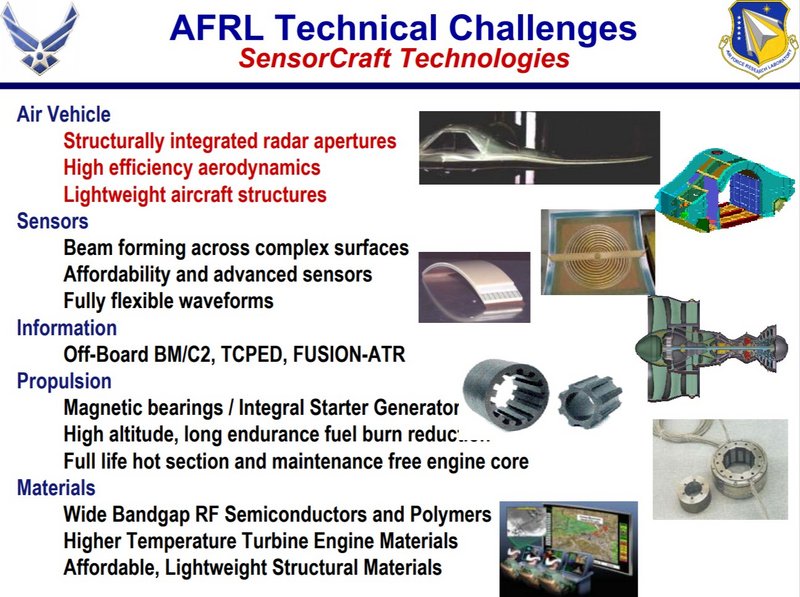


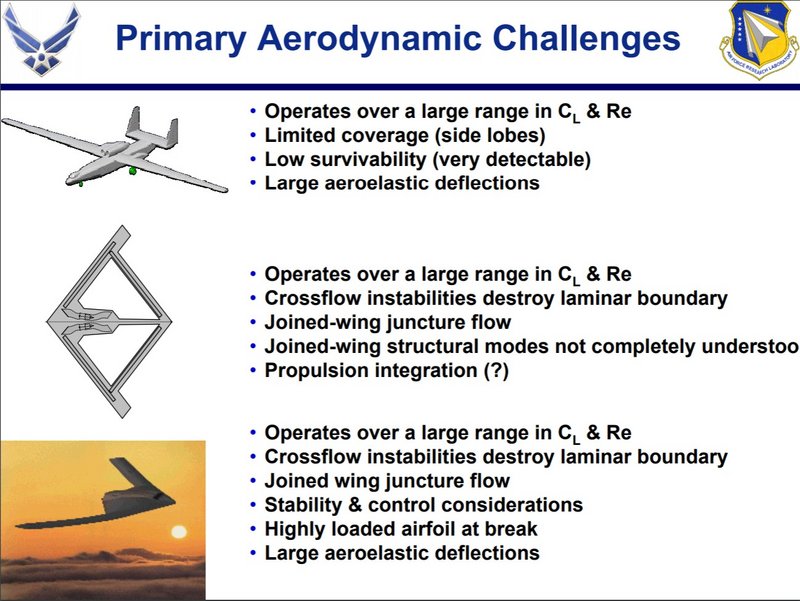

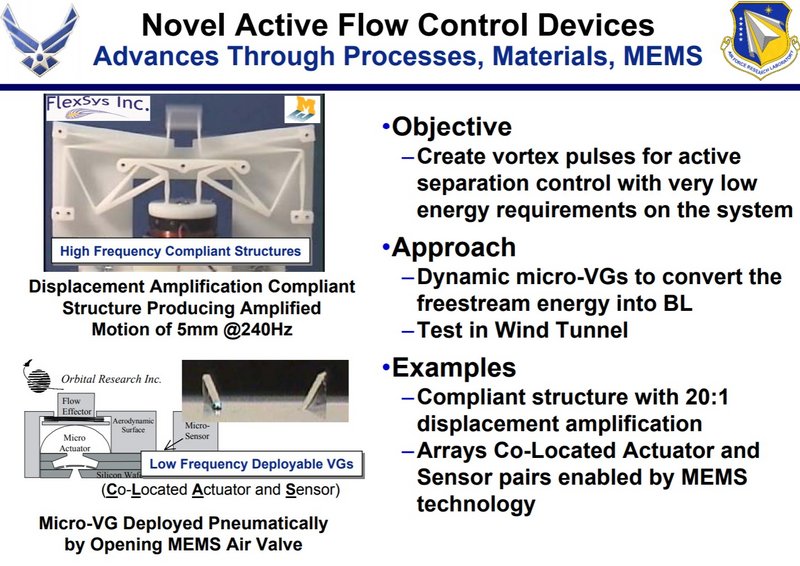

Re: US military, technology, arms, tactics
No no. What i meant was, the BGVs which look like RVs with fins are different from the ones in this image - https://www.defencetalk.com/wp-content/ ... 008_lg.jpgbrar_w wrote:HCV's are H-BGV's. They just come in different shapes. Lockheed's Tactical Boost Glide BGV which will be made operational on the first US Hypersonic weapon (AGM-183A ARRW) to declare IOC in 2022 is a high L:D design which likely borrows heavily Lockheed's Falcon work for DARPA. Here's an artists rendring of it -.....Prasad wrote: Next question is - will the hcv eventually be powered? because these bgvs are conical with wings but the hcv appears to be a plane-ish winged-body.
The hcv (the ultimate goal so to speak) in that image, a progression from the HTV-1 is a vehicle with twin hypersonic engines (and i think lockmart proposed a tbcc configuration for it too). that is what i was talking about.
They're parallel items (waverider and scramjet engines) to be integrated into a fantastic single vehicle at a later date (or maybe they're already there). (Just answered my own question there, so nvm).
Re: US military, technology, arms, tactics
That was part of the Lockheed portfolio but it wasn't an evolution of H-BGV's but a different capability which would have resulted in an air-vehicle capable of taking off, transitioning from subsonic to supersonic and then to hypersonic speeds between Mach 6 through Mach 9. The effort is believed to live on and Lockheed has more recently hinted at breakthroughs towards the SR-72 configuration. A combined cycle hypersonic program is one the few elements of the US DOD's hypersonic portfolio that is a bit of a black hole. No one knows who the contractor is (though it would be difficult to imagine it being anyone besides the Skunks) but there are rumours that it is in the works since DARPA has an active program to this end. Where there is ambiguity is when it comes to where what DARPA develops and demonstrates transitions to in terms of a service program.Prasad wrote:No no. What i meant was, the BGVs which look like RVs with fins are different from the ones in this image - https://www.defencetalk.com/wp-content/ ... 008_lg.jpgbrar_w wrote:
HCV's are H-BGV's. They just come in different shapes. Lockheed's Tactical Boost Glide BGV which will be made operational on the first US Hypersonic weapon (AGM-183A ARRW) to declare IOC in 2022 is a high L:D design which likely borrows heavily Lockheed's Falcon work for DARPA. Here's an artists rendring of it -.....
The hcv (the ultimate goal so to speak) in that image, a progression from the HTV-1 is a vehicle with twin hypersonic engines (and i think lockmart proposed a tbcc configuration for it too). that is what i was talking about.
They're parallel items (waverider and scramjet engines) to be integrated into a fantastic single vehicle at a later date (or maybe they're already there). (Just answered my own question there, so nvm).
From Guy Norris during an Aviation Week Podcast linked below -
https://aviationweek.com/defense-space/ ... am-maturesAnd one last thing Steve, sorry, I'm just going to mention this, is that of course, Lockheed, when they unveiled to us several years ago this idea of an SR-72, also outlined their vision for using the same kind of Turbine Based Combined Cycle (TBCC) combined cycle capability, really is the fundamental power system, foreign [for an] ISR vehicle, whether it would be crewed or not crewed. And under the plan, they outlined by 2020, by now, they would be testing a subscale flight demonstrator. Now if that's happening, it's definitely in the black world, we don't know about it. But we've had reports, none of which have been verifiable, that vehicles have been seen, but it's again, at this stage it's all a bit of a mystery. So Steve, sorry. Did you want to jump in there?
Re: US military, technology, arms, tactics
2 additional reference images for RQ-180. One is a sensor craft model (configuration) officially released by Northrop Grumman, while another is a graphic from them towards a sensor craft supportive R&D program (also by Northrop) -

Alongside what was spotted over Edwards

Additional reference image -
https://i.ibb.co/WngTHdt/Hi-LDA-Northrop.jpg
Reading up on stuff on the SC program posted by Northrop, Boeing and Lockheed (and USAF/AFRL) over the years, three main objectives stand out -
1 - High Altitude operations coupled with Very Low Observable design configurations. B-2 has a ceiling of just below 50,000 ft. SC needed about 70,000 ft cruise altitude
2 - Highly dense sensor embedded aero structures. A Boeing paper I've come across points to a 2-3 fold increase in the number of embedded sensors, antennas and other mission critical electronics (they compared to F-22 and a generic Next Gen. Fighter) within the flight critical aero structures and in close proximity to control surfaces. The slides posted above somewhat touch that aspect but there are a few published papers to that end on AIAA as well.
3 - Wide area 360 degree sensor and communication allowing for discrete penetrating targeting platform to support F-22/F-35 and B-21 (NGB at the time) targeting needs
It is possible that as the efforts transitioned from an AFRL research program to a formal USAF program of record (what became the RQ-180) they may have added additional requirements but these three are a consistent theme in both research/technical publications that I've read over the years and in the two AvWeek articles that uncovered new details on the programs existence and subsequent entry into service. #2 and #3 is probably also going to spill over into the B-21 program to some degree.

Alongside what was spotted over Edwards

Additional reference image -
https://i.ibb.co/WngTHdt/Hi-LDA-Northrop.jpg
Reading up on stuff on the SC program posted by Northrop, Boeing and Lockheed (and USAF/AFRL) over the years, three main objectives stand out -
1 - High Altitude operations coupled with Very Low Observable design configurations. B-2 has a ceiling of just below 50,000 ft. SC needed about 70,000 ft cruise altitude
2 - Highly dense sensor embedded aero structures. A Boeing paper I've come across points to a 2-3 fold increase in the number of embedded sensors, antennas and other mission critical electronics (they compared to F-22 and a generic Next Gen. Fighter) within the flight critical aero structures and in close proximity to control surfaces. The slides posted above somewhat touch that aspect but there are a few published papers to that end on AIAA as well.
3 - Wide area 360 degree sensor and communication allowing for discrete penetrating targeting platform to support F-22/F-35 and B-21 (NGB at the time) targeting needs
It is possible that as the efforts transitioned from an AFRL research program to a formal USAF program of record (what became the RQ-180) they may have added additional requirements but these three are a consistent theme in both research/technical publications that I've read over the years and in the two AvWeek articles that uncovered new details on the programs existence and subsequent entry into service. #2 and #3 is probably also going to spill over into the B-21 program to some degree.
Re: US military, technology, arms, tactics
https://twitter.com/TheDEWLine/status/1 ... 8342028289
Steve Trimble @TheDEWLine wrote: A two-bay, 95,000 sq. ft. hangar will be built for the B-21 at Ellsworth Air Force base.
Maybe there are some geometry whizzes out there who can derive a wingspan limit out of that.
https://beta.sam.gov/opp/0e598611042342 ... rue&page=1
Re: US military, technology, arms, tactics
Wingspan in this is of limited utility. Given the funky thing going on with the twin engine set up, the range is going to be a significant improvement over the B-2. Size and payload is easier to track via "how much bomber does a $550 Million firm cost cap (fixed price contract from the very first LRIP lot) buy you" if you are a Russia and China or an aerospace industry analyst with good modeling data.
Re: US military, technology, arms, tactics
Boeing Wins Chance To Reenter Hypersonic Weapons Race
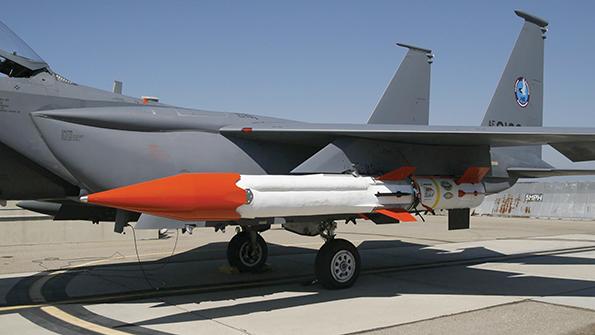

Caption: Boeing and Aerojet Rocketdyne will build on their experience with the HyFly flight tests that were conducted between 2006 and 2010.
The U.S. Defense Department has revived Boeing’s hopes for a near-term win in the hypersonic weapons market by inserting the company into a competition to build a Mach 6 cruise missile and reviving a decade-old concept based on dual-combustion ramjet technology.
The Joint Hypersonic Transition Office, which was established by Congress this year, has funded a Boeing-led team to complete a preliminary design review (PDR) and ground testing for a dual-combustion ramjet, Gillian Bussey, the office’s director, told reporters on Oct. 27.
In remarks to the Institute for Defense and Government Advancement’s Hypersonic Weapon Summit on Oct. 29, Bussey identified the new program as the “HyFly 2.”
The name evokes memories of an ambitious joint project between DARPA and the U.S. Navy that culminated in three failed flight tests between 2007 and 2010.
Software, booster and battery issues caused each of the three original HyFly flight tests to end in failure before the critical technology—a dual-ramjet and -scramjet propulsion system designed by a team of Aerojet Rocketdyne and Johns Hopkins University Applied Physics Laboratory—could activate in flight.
The original HyFly test failures proved especially disappointing for the Navy. HyFly’s unique dual-combustion technology would have allowed for a rocket-boosted missile with a relatively low-speed ramjet activation point at around Mach 3.3, which compares to over Mach 4 for the scramjet-powered Boeing X-51A Waverider.
In a dual-combustion system, the ramjet serves as a subsonic gas generator, feeding an accelerated exhaust of superheated gas downstream to a scramjet. The secondary supersonic combustion propels the vehicle up to Mach 6. The Navy originally hoped to apply the HyFly technology to a hypersonic cruise missile optimized for the carrier-based Boeing F/A-18E/F.
The new contract for HyFly 2 comes as the Navy prepares to make a decision in fiscal 2022 on a future hypersonic cruise missile. The HyFly 2 could join two other options in development by teams from Lockheed Martin/Aerojet and Raytheon Technologies/Northrop Grumman. Both teams plan to fly competing demonstrators by the end of this year under the joint DARPA and Air Force-funded Hypersonic Air-breathing Weapon Concept (HAWC) program. With contract awards for hypersonic cruise missiles planned by the Navy and Air Force in fiscal 2022, Boeing’s upcoming ground tests and PDR offer the services a third technology option. The HyFly 2 concept appears optimized for a carrier-based fighter but could also be applied to the Air Force’s tactical aircraft fleet.
“Our motivation here is to keep other propulsion options on the table,” a U.S. military source says.
“Regardless of whether a service picks up the vehicle concept, we think there is sufficient value in the innovative technologies used in this concept and propulsion design to warrant this level of investment,” a Defense Department spokesman says. “It also provides technological diversity to our hypersonic air-breathing efforts and helps maintain a robust and competitive industrial base.”
After decades of inconsistent support for air-breathing hypersonic propulsion programs, the technology is enjoying a renaissance globally. Experts have speculated that Russia’s hypersonic Zircon anti-ship missile may use a scramjet propulsion system, but the Kremlin has never elaborated on the specific technologies used. China has openly performed flight tests as recently as 2018 on an experimental scramjet-powered vehicle called the Starry Sky-2. In September, India joined the air-breathing propulsion club, completing a Mach 6 test flight of the Hypersonic Technology Demonstration Vehicle testbed, according to the Defense Research and Development Organization.
The U.S. defense industry, meanwhile, is gearing up for a new era of mass production of scramjet-powered, hypersonic cruise missiles. During a third-quarter earnings call in October, Northrop CEO Kathy Warden said the company is investing now to support low-rate initial production of hypersonic cruise missiles within 4-5 years. Northrop’s Innovation Systems division, formerly Orbital ATK, supplies the scramjet engine for Raytheon’s HAWC design.
Although Boeing’s hypersonic profile has diminished considerably since the final flight success of the X-51A in 2013, the company’s reentry into the picture with the HyFly 2 project is not a surprise.
“We continue to invest in this area and are focused on developing and maturing key technologies for both commercial and defense applications,” a Boeing spokesman says. “As mentioned during the Hypersonic Weapons Summit, Boeing is currently engaged with propulsion risk reduction and will be performing preliminary design review.”
Despite the flurry of hypersonic missile-related awards in recent years to Lockheed and Raytheon, Boeing has quietly continued high-speed technology development in support of several high-Mach research, weapons and aircraft projects.
Like the X-51A, the company’s ongoing development work builds on a foundation of hypersonic experience ranging back to the rocket-powered experimental X-15 aircraft of the 1950s and 1960s and the Advanced Maneuvering Reentry Vehicle (AMaRV) program, which ran until 1988. Decades of hypersonic reentry experience were also amassed during the space shuttle era, and Boeing continues to build on that with operations of the Boeing-built X-37B for the U.S. Air Force.
The company’s pioneering foray into air-breathing scramjets began with the X-43 program with NASA, which ended in 2004 after setting two consecutive airspeed records at Mach 6.8 and 9.6.
Beyond the follow-on X-51A, Boeing also continued the HIFiRE hypersonic research program that in 2017 successfully tested flight control of the company’s waverider glider with the Air Force Research Laboratory and the Defense Science Technology Group in Australia.
Boeing’s long-running air-breathing engines partnership with Aerojet Rocketdyne also extended to include work on the rocket-powered XS-1 Phantom Express reusable spaceplane demonstration vehicle with DARPA, a project from which Boeing withdrew this year.
However, Boeing has also partnered with the former Orbital ATK on recent air-breathing hypersonic projects with DARPA and the Air Force. Boeing and Orbital ATK teamed up for the DARPA-led Advanced Full Range Engine (AFRE) initiative, which is testing elements of a turbine-based combined-cycle (TBCC) propulsion system designed for future runway-based reusable hypersonic vehicles operating at up to Mach 5.
AFRE builds on previous Mode Transition and Falcon Combined-Cycle Engine Technology (FaCET) efforts—the latter completed in 2009—and combines an off-the-shelf turbine and dual-mode ramjet/scramjet (DMRJ). The AFRE engine uses mass-injection precompressor cooling to boost the maximum speed of the turbine. The water injection system, together with the common turbine/DMRJ inlet, combustor and nozzle are due to be integrated later this year into the complete TBCC assembly with freejet testing of the engine expected in 2021.
In the past two years, Boeing has also unveiled ambitious plans for long-term development of larger-scale military and commercial hypersonic vehicles. Although inevitably affected by slowdowns related to the COVID-19 pandemic and the company’s commercial financial woes, the eventual focus is a subscale flying demonstrator that could provide the foundation for several follow-on air-breathing vehicles.
Announced in 2018, the reusable Mach 5-plus demonstrator vehicle design is initially aimed at a future high-speed strike and reconnaissance aircraft. The sharply swept delta-wing vehicle concept builds on the X-43 and X-51A hypersonic demonstrator programs as well as Boeing heritage company high-speed projects including the Mach 3 XB-70 experimental bomber. Like the outwardly similar SR-72 concept revealed in 2013 by Lockheed Martin, the Boeing design is aimed at a successor later this decade to the long-retired SR-71 Blackbird reconnaissance aircraft.
The commercial hypersonic concept is targeted at cruise speeds of Mach 4 or 5 and an operational altitude of up to 95,000 ft. to enable same-day return flights, even across the Pacific. More recently, in August of this year, Boeing also revealed interest in supporting the development of a Mach 3 supersonic transport project with Virgin Galactic.
In related developments: Boeing has invested in UK-based Reaction Engines, which is developing air-breathing propulsion for high-speed flight. Alongside Rolls-Royce and BAE Systems, Boeing formed part of a $37.3 million funding round for Reaction Engines in April 2018, and Boeing’s stake in Aerion’s Mach 1.4 AS2 supersonic business jet project was announced in February 2019.
Re: US military, technology, arms, tactics
If the US Navy ever needed a dedicated S-3 like capability back on the CVN then the answer is pretty obvious and the platform is already integrated on the carrier and its air-wing and will be operationally deployed in the coming months. They'll be happy to trade a bit on the cruise speed to get a more available platform. And it can rotate between CVN's and L-Class ships which opens up putting it on both the CVN and the "Lightning Carrier".Philip wrote:Brar for the HWAAC pic. It would be an extra option available.As I said before,there has been no replacement for the S-3A Viking.
But the Chinese submarine threat isn't very substantial at the moment to warrant this level of investment. And NATO, between USN capability and MPA footprint and European ASW frigates has some great ASW capability. So I doubt it will be a very pressing concern compared to other areas where the money can be spent.
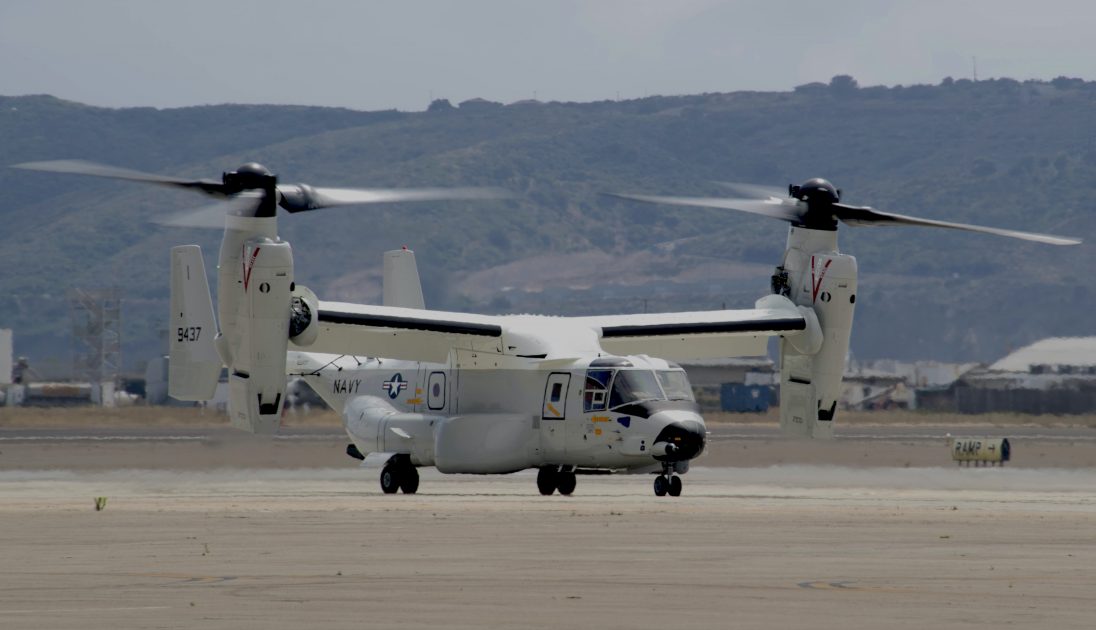
Re: US military, technology, arms, tactics
Not a bad tribute to someone who shepherded the development of the legendary JDAM family of munitions.
Eglin units pay respects with mission dedication
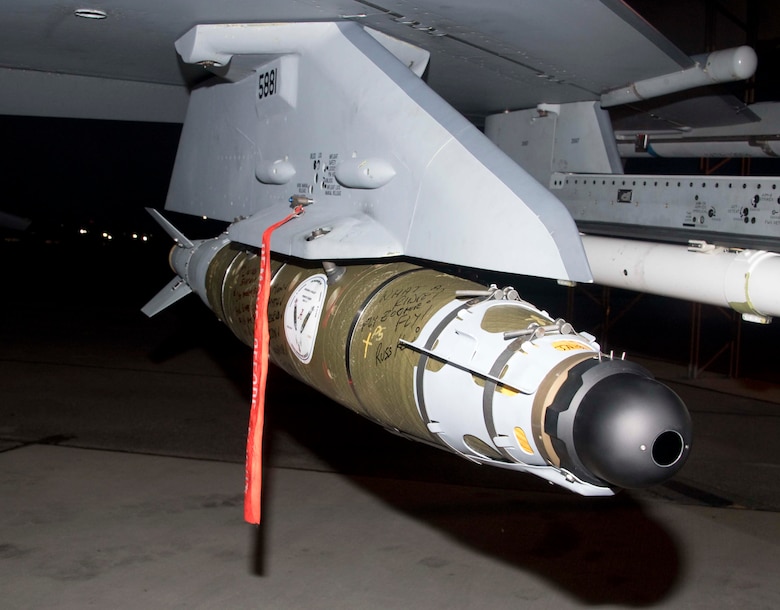
Eglin units pay respects with mission dedication
Team Eglin units showed gratitude, respect and admiration with the dedication of the BLU-111, Joint Direct Attack Munition’s final flight test mission on the Eglin Test and Training Range, Oct. 15.
The Armament Directorate, and the 780th and 40th Test Squadrons honored Richard Walley, division chief and senior materiel leader for Direct Attack Weapons, who passed away last month.
“This particular JDAM variant was one of his special interest programs. This made it especially fitting this final flight leading to the fielding of the BLU-111 weapon was dedicated to his life and legacy,” said 1st Lt. Jacob Onyechi, 780th Test Squadron, of the flight that took place on Walley’s 64th birthday.
Onyechi, a test engineer who met Walley during previous test missions was impressed by the high regard and esteem expressed for Walley.
“At one point, he was a fresh ‘LT’ just like me and he went on to do amazing things,” said Onyechi. “It’s surreal to step back and grasp that there were giants like Mr. Walley who impacted so much of the weapons technology we benefit from and depend upon today.”
Walley, a 22-year Air Force veteran, was considered a special figure in weapons acquisition for his contributions to key technological advancements for the warfighter.
As a sign of admiration and respect, heartfelt gestures to honor Walley were scattered throughout the flight test mission.
Before the mission, the two F-16 test aircraft were designated call-signs WALLEY 01 and WALLEY 02. To further remember their friend, program office members wrote brief and personal inscriptions on each of the weapons to be dropped. Some read ‘IN MEMORY of RICHARD A. WALLEY, LEADER-WARRIOR-MENTOR-ICON.’ In another expression of homage to Walley, the name of his favorite team, ‘Roll Tide’ was announced over the radio each time the weapons reached their targets.
The most notable gesture was the flag flown in the test aircraft which was presented to the family after the mission.
The Alabama native was key in the fielding of the JDAM and the bolt-on guidance kits used to convert unguided bombs into all-weather, high precision guided munitions. His work helped lead to the fielding capability of the 500, 1,000, 2,000 and 30,000 pound variants.
In addition to his JDAM contributions and involvement in numerous other programs, the 1979 Air Force Academy graduate was an F-22 Program Execution Manager who oversaw the Small Diameter Bomb and the Massive Ordnance Penetrator programs.
Walley empowered those around him to accomplish the mission, according to Stephen Pratt, Armament Directorate.
“Walley was an icon within the Weapons Enterprise and the acquisition community,” he said. “He made a huge impact on everyone’s life, both personally and professionally. We will miss his larger than life personality, his love of family, his unwavering friendship, and his focus on mission.”

Re: US military, technology, arms, tactics
A neat graphic with differences between USAF F-15E's and the upcoming F-15 EX aircraft. Interesting to note that despite the USAF vetting the test campaign on the F-15SA and QA models, the F-15EX will have a nearly 3 year operational test and evaluation period leading up to its IOC in 2024.

Source Article

Source Article
Re: US military, technology, arms, tactics
Glad to see this program making headway. It was an exciting development for radar geeks when this research was picked up and funded for advanced demonstrations by USN back in 2016 and it seems that 4 years later they are testing actual hardware. What NSS is essentially showing is that a dual band (UHF and S Band) array and an L-band IFF can collectively offer a generational leap over the current hybrid UHF band array on the E-2D. That the UESA was a superior option was something that NAVAIR knew going into the E-2D program but the much simpler (and less riskier) radar on offer for the E-2D offered such a performance leap (described as 2 generational leap by the operators) over the legacy E-2C that they just went with the low risk option. But as cruise missiles get faster and their signatures shrink the higher performance is probably warranted in a future E-2D+ or E-2E configuration or perhaps a replacement aircraft if they head in that direction.
UESA Revival Offers Dual-Band Radar For Future Early Warning Aircraft

UESA Revival Offers Dual-Band Radar For Future Early Warning Aircraft

A small, Hawaii-based company hopes to support the next generation of airborne early warning aircraft by demonstrating an active, electronically scanned array with instantaneous, 360-deg. coverage inside a radome with a unique dual-band antenna.
North Star Scientific has demonstrated radar that shows 3-dB improvement compared to a first-generation ultra-high-frequency (UHF) band (400 MHz-1 GHz) electronically scanned array (UESA) tested by the U.S. Navy nearly 20 years ago, says co-founder Jim Stamm.
By coupling the UESA with an S-Band (2.3-3.7 GHz) antenna array, North Star believes the technology could revolutionize the airborne early warning (AEW) and airborne tracking mission for the U.S. Navy’s existing fleet of Northrop Grumman E-2D Advanced Hawkeyes—not to mention the respective Boeing E-3 Airborne Warning and Control System fleets for the U.S. Air Force and NATO or a future aircraft that could replace the Navy’s E-2D.
“A 3-dB change means you’ve basically doubled the radiated power,” Stamm says. “It doesn’t mean that you can see things twice as far away, because radar is a little more complicated than that, but it’s a substantial increase.”
A combination of the UESA with an S-band antenna could further improve performance. The UHF-band elements—supported by a 2D filtering technique called space-time adaptive processing—would provide early warning detection of even low-flying, stealthy aircraft against dense background clutter over land. Targets detected by the UHF-band element could then cue the shorter-wavelength S-band antenna to provide precise targeting at long range.
North Star has demonstrated an improvement in radiated power, but the company is still working on the integration of the interleaved, dual-band antennas.
“It has evolved into dual polarization for the S-Band, which is challenging to kind of shoot through the UHF band, so there’s still some work to be done,” Stamm says. “But the antenna, I would say, is 90% there.”
To support a potential retrofit program, North Star has designed the dual-band array to be compatible with the Lockheed Martin APY-9 radar on the E-2D. The Navy has been funding North Star’s work for a decade under a program called the High-Gain UESA radar, but Naval Air Systems Command (Navair) officials say they are not ready to commit to a retrofit program for the E-2D fleet or for a potential follow-on program.
“While the effort is making progress toward identifying improvements in performance over the existing antenna array, it is too early to project whether the technology will mature on a timeline that supports the incorporation onto the E-2D Advanced Hawkeye’s APY-9 radar, or as part of a follow-on sensor or platform,” Navair says in a statement.
After recently completing a contract to mature the UHF design while testing the multiband elements, North Star is now working on a $13.2 million contract to focus on refining the design of an integrated radar transceiver assembly.
At the core of the new technology is a second-generation UESA that has been in development for over 10 years.
The Navy experimented with UESA technology in the late 1990s and early 2000s for an E-2C radar modernization program that evolved into the E-2D configuration. But the Navy deemed the first-generation UESA radar too risky.
Instead, the Navy equipped the E-2D with the APY-9 radar, which includes the 7.3-m-dia. (24-ft.), 18-channel ADS-18 antenna with hybrid mechanical and electronic scanning.
The existing APY-9 operates the antenna in three modes within the UHF band: full mechanical scanning while turning at 6 rpm, a reduced rotation speed with electronic beam steering and a nonrotating radome with full electronic scanning in a 120-deg. section of airspace.
By comparison, the North Star radar would enable full electronic scanning across 360 deg. with twice the radiated power in two different bands of the spectrum. The North Star UESA is comprised of 54 transmit-receiver elements. The company is still deciding whether to feed the power through a 2:1 or 3:1 ratio coupler switch, allowing the radar to use either half or one-third of the elements at any one time. A 4,000-element S-band antenna also would be integrated within the circular array for dual-band coverage.
Re: US military, technology, arms, tactics
Finally, the FY-21 budget deliberations are coming to an end. It seems that the final approved F-35 tally for FY-21 is going to be between 92 and 96 aircraft which is like 90+% of the UPL so the three US services would be happy I suppose..
Senate has them at 60 x F-35A's, 26 F-35C's, and 10 x F-35B's
Senate has them at 60 x F-35A's, 26 F-35C's, and 10 x F-35B's
The release of the Senate’s spending proposal paves the way for an eventual deal with the House, which passed its own appropriations bill in July. But no matter which chamber of Congress wins out, the Defense Department will fall short of the 98 F-35s it purchased in FY20, potentially signaling that even Congress has a limit on how far it will go to beef up purchases of the Lockheed Martin-made jet.
In addition, lawmakers want more visibility from the Pentagon about how exactly it’s spending taxpayer funds. LINK
Re: US military, technology, arms, tactics
US Air Force Wants Lasers on Fighter Jets by 2025
Lockheed Martin is working toward outfitting a directed energy system on fighter jets by the middle of the decade, according to a company official.
“We’re committing to putting a laser pod equipped with a high-energy laser in the air within five years,” said Mark Stephen, business development lead for strategic technology development at Lockheed Martin’s missiles and fire control division.
The company is a core member of an industry team partnering for the Air Force Research Laboratory’s Self-Protect High Energy Laser Demonstrator, or SHiELD, program, Stephen said during a virtual media roundtable in September.
AFRL is developing a directed energy system on an aircraft pod that will demonstrate self-defense against surface-to-air and air-to-air missiles, the organization said in a press release.
The effort is meant to inform requirements for a tactical airborne laser weapon program of record in the mid-2020s, Stephen noted.
Lockheed Martin is also partnering with the Air Force, Navy and Army to develop other directed energy capabilities. These systems will defend U.S. forces against threats such as rockets, small drones and small attack boats, said Robb Mansfield, senior manager of business development for laser and sensor systems within Lockheed Martin’s integrated warfare system and sensors business.
One aspect of the technology the company has been focused on perfecting is its beam director, Mansfield said.
“The beam director is the optical system that puts the high-energy light on target and keeps it there with enough precision to defeat the threat,” he said. “We spent several years developing producible, low [size, weight and power] and low-cost tactical beam directors in house.”
The technology will first be demonstrated on an Army application, the Indirect Fire Protection Capability-High Energy Laser, he noted.
“This is a 300-kilowatt class laser weapon system, which mounts on the ground vehicle to defeat drones, rockets, artillery and mortars,” Mansfield said. The demonstration is expected to take place by late 2021.
The company has also established a new directed energy system integration lab in Orlando, Florida, to test high-energy lasers and beam directors as it integrates them into pods, Stephen said.
“By 2021, this lab will be certified to test high-energy laser outfits up to 50 kilowatts and will allow firing of 150-kilowatt class lasers by 2024,” Stephen noted.
To build and manufacture the systems, the company is investing more than $20 million into its Orlando-based optical components center.
“We intend to use this space to establish low-risk production processes that enable us to build critical laser weapon optical components, some of which have never seen a production line at the rates our customers need,” Stephen said.
Re: US military, technology, arms, tactics
Lengthy article but covers one of the companies working on the US Army's Air Launched Effects capability that will be the eyes and ears of the future vertical lift fleet -

Area-I expanding air-launched effects portfolio with 1,000km-range drone

Area-I expanding air-launched effects portfolio with 1,000km-range drone
There was one company US Army Brigadier General Walter Rugen wanted to “brag on” after the service’s recent Project Convergence exercises, a proving ground in the Arizona desert for futuristic war fighting concepts. That was start-up Area-I.
The small Georgia-based company has come out of the woodwork to become a key supplier for the US Army’s experimental war plans. In particular, it is developing so-called air-launched effects, small unmanned air vehicles (UAVs) that are launched from aircraft or other UAVs to perform scouting missions behind enemy lines.
The service is leaning on these small drones to stay relevant in an era where sophisticated surface-to-air missiles threaten to shoot down its traditional way of fighting. Unable to safely approach enemy forces too closely with its attack and scout helicopters, the US Army wants to probe from a distance with air-launched effects and then lob long-range missiles at key targets.
Area-I’s Altius-600 has become a focal point of US Army exercises. It has been launched from a Sikorsky UH-60 Black Hawk and a General Atomics Aeronautical Systems MQ-1C Gray Eagle. The start-up, which was founded in 2009, has worked closely with the service over the past couple of years to pioneer the air-launched effects concept. It now boasts that it has air-launched its Altius-600 more than 40 times in the past six months and only lost two aircraft.
With recent successes under its belt, the company is expanding its ambitions. Area-I is developing an even larger air-launched effect, called the Altius-900. That UAV is capable of more than 15h of flight time and has a range of 540nm (1,000km). Efforts are also underway to repurpose the Altius-600 for launches into the eye of hurricanes as part of a National Oceanic and Atmospheric Administration (NOAA) mission to better understand the extreme weather...
More recently, the company has become involved with the US Army, pursuing the service’s vision for air-launched effects, a concept that was pioneered in coordination with the Combat Capabilities Development Command Aviation and Missile Center’s Technology Development Directorate – Aviation at Fort Eustice in Newport News, Virginia, says Alley.
During Project Convergence, the Altius-600 was launched from a UH-60 utility helicopter at as little as 100ft above ground level. The Black Hawk was serving as a surrogate Future Attack Reconnaissance Aircraft (FARA), the US Army’s next-generation armed scouting helicopter, intended to replace the retired Bell OH-6 Kiowa Warrior.
The service wants to prove that the small drone can launch from a scout helicopter that is flying so low that enemy radar cannot differentiate the rotorcraft from the ground or surrounding hills. Essentially, it is the Altius-600’s mission to go and hunt for targets while FARA hides in the radar shadows.
Indeed, the US Army has outlined several possible missions for air-launched effects, including intelligence, surveillance and reconnaissance (ISR), electronic warfare, decoy applications, communications relay work and loitering munition strikes. Of particular interest for ISR and strike missions are the Pantsir-S1, a Russian short-range air-defence system, as well as command and control centres....
The Altius-500 was designed to be stored and launch from A-size Sonobuoy Launch Canisters aboard the Boeing P-8A Poseidon maritime patrol aircraft. Because the P-8A does not have magnetic anomaly detection equipment to sense the presence of a submarine below the surface of the water the USN was considering using the Altius-500 to do the mission. Alley says that project is on hold while the service decides if it wants to proceed....
Finally, Area-I is developing the Altius-900 for a mystery customer. Alley declines to name the client. “Wouldn’t you like to know,” he says.
Weighing 36.3kg (80lb), the Altius-900 is intended to be hung and dropped from 14in, 450kg-class bomb rack units, like those that are used by the US Air Force’s General Atomics MQ-9A Reaper. The larger UAV has 6.1m (20ft)-long telescoping wings. It can be dropped out of the back of a cargo aircraft, in addition to being deployed from a bomb rack, says Alley. Instead of an electric motor, it gets its range from a hybrid-electric engine that runs on heavy fuel. The aircraft is still at a relatively low technology readiness level, and Area-I is planning additional flight tests soon.
Alley declines to say what the Altius-900’s application is, but says its payload can include electro-optical and infrared sensors. “I think you can kind of deduce from the endurances and payloads that are presented online, there’s quite a bit of goodness associated with that,” he says.
Re: US military, technology, arms, tactics
Continuing on this thread. Original - viewtopic.php?f=3&t=7625&start=1080#p2362519brar_w wrote:The USAF/USN between them will have nearly 1000+ F-22's and F-35's by the time the AIM-260 enters full rate production, and the TD's for 6th gen would have most likely already flown, so this was probably the right time to seek a missile more optimized for the next gen. combat aircraft and the types of threats that will be prevalent in the post 2030 timeframe. It appears the F-22 community won over the F-15 community when it came to the decision authority at the ACC as the many in the latter community were pushing an extended range AMRAAM during Gen. Jumpers time there. Probably still doesn't stop Raytheon from strapping aerojet's VFDR motor on the Aim-120D for export given the sheer number of qualified platforms and the supply constraint of the AIM-260 well into the early 2030s (US demand). But I doubt the USAF/USN will be interested unless they package it as a conversion for legacy rounds.Indranil wrote:Brar ji,
I am also coming to the same conclusion as yours based on my own readings on ducted ramjet motors. I think that USAFs reservation about ducted ramjet motor powered A2A missiles are shared by players worldwide. I think every country will field both kind of missiles:
1. Long range, multi-pulse long range rocket-engines with better next gen propellants
2. Long range, but envelop-restricted ducted ramjet motor based missiles
India, China and Russia are focused on both. I don't know if Israel has a DR based missile program.
Not a bad time to revisit this given that the 6th gen demonstrator (at least 1, with at least 1 more to come based on what the program wanted to do in 2015) has flown and done so about a year and a half ahead of when the AIM-260 is expected to begin its testing.
Based on what we know the AIM-260 program appears to be a classified (SAP) effort that will remain classified even after the weapon is fielded. I wonder what the OML is likely to reveal given that this level of secrecy wasn't afforded to the AIM-120 even at the peak of the cold-war (when it was developed). The storage, handling and movement of the weapon at air-bases is also going to be classified (as revealed by construction contracts for SAP compliant bunkers and storage and handling systems) which means that at least for the first few years, we will not be seeing this weapons hanging externally on aircraft. Perhaps a generic, non_OML_similar captive training round would be developed for the Super Hornet but based on what is known so far, I don't think we'll see it even post IOC (based on what I can deduce based on limited info released so far).
We know that despite having at least one VFDR motor in rate production, the AIM-260 is not leveraging that mature tech as its propulsion solution despite having tested a AMRAAM sized VFDR weapon against multiple air to air and air to ground targets as recently as 2015/2016. This could be because of a number of things but my guess would be that the AIM-260 has tighter weight and agility tolerances/requirements and may even play around with a top speed that is not consistent with efficient VFDR envelopes. My guess is that they've found an alternate way of getting long range propulsion and may have even cracked (they've done it in the S&T/R&D world but no indication yet that it is mature enough for mainstream weapon production) the code on SRM throttleability. There is certainly a case to be made that a 5th and 6th gen aircraft A2A weapon needs to be able to modulate speed to cover its distance efficiently and to allow optimal scan time for its guidance/seeker system(s). How exactly this is achieved will be interesting but its not via a SFRJ or VFDR option, two areas that were invested heavily in the 90's and trialed/operationalized in the 2000s and 2010s.
Propulsion and propulsion integration could also possibly help explain why Lockheed trumped Boeing and Raytheon after the latter two were the ones to have been downselected for advanced flight demonstrators for the DARPA run T-3 program (which was a joint USAF effort) for which Lockheed didn't meet the cut. Perhaps 5th and 6th gen A2A concepts played a pivotal role in the abrupt though reasonably well thought out (for it to survive Congressional and auditor scrutiny and/or OEM protest) change in direction. We won't know for sure but these are things that are extremely intriguing and to watch out for when the veil on this program is finally lifted later this decade. I can't think of any other similarly sized program where the tech demonstrations were conducted by 2 rather well resources OEM's ( Boeing and Raytheon, and at least one pointed to meeting objectives and having successful demonstrations) including the program incumbent, and yet the contract was ultimately awarded to an OEM that didn't even make the initial tech demo cut. Perhaps Lockheed was pitching a low readiness technology to DARPA and was deemed too high risk but yet continued on its own or under separate USAF contracts. We just don't know yet.
Re: US military, technology, arms, tactics
https://twitter.com/cencio4/status/1326 ... 10116?s=20 ---> The postman delivered this beauty yesterday. It’s not an official patch (at least, not yet, since someone told me pilots at TTR could receive a few of these soon...) but it’s truly awesome.


Re: US military, technology, arms, tactics
https://twitter.com/Casillic/status/132 ... 69825?s=20 ---> Lockheed C-141 StarLifter Advertisement. For when you need to move 12 Jeeps, 3 equipped with Davy Crockett Atomic launchers!
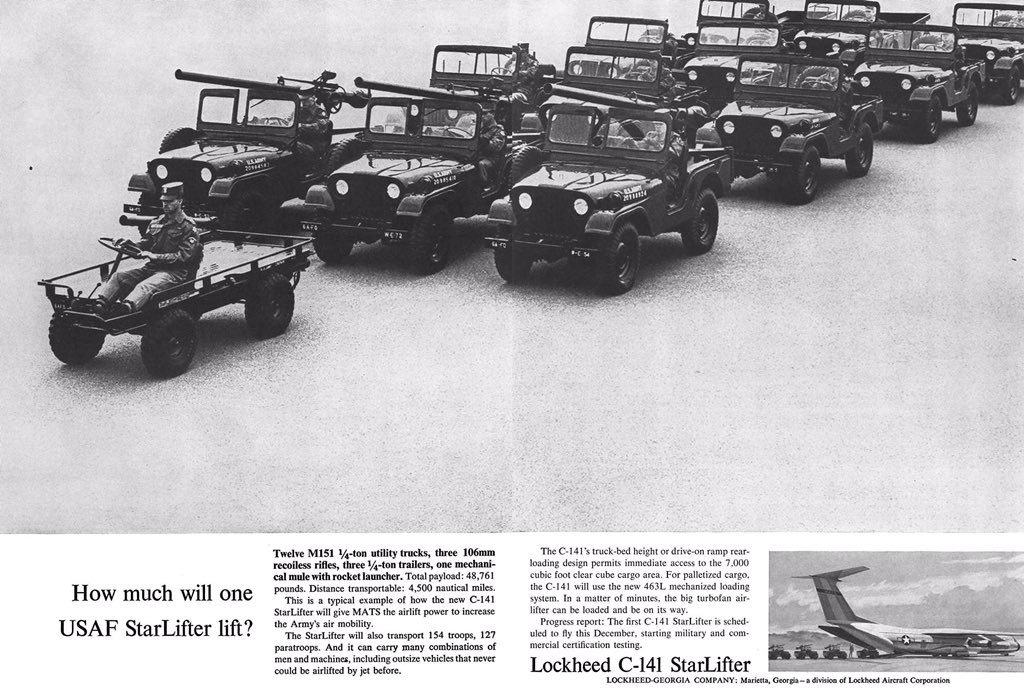

Re: US military, technology, arms, tactics
^^ Davy Crockett was absolutely insane. Something like this wouldn't even stand the chance of being allowed to be developed in current times (in the US or Europe).
Re: US military, technology, arms, tactics
Likely to compete with the Iron Dome's Tamir interceptor in the "shoot-off" scheduled for next year.
US Army Offers Glimpse Of New Low-Cost Surface-To-Air Missile
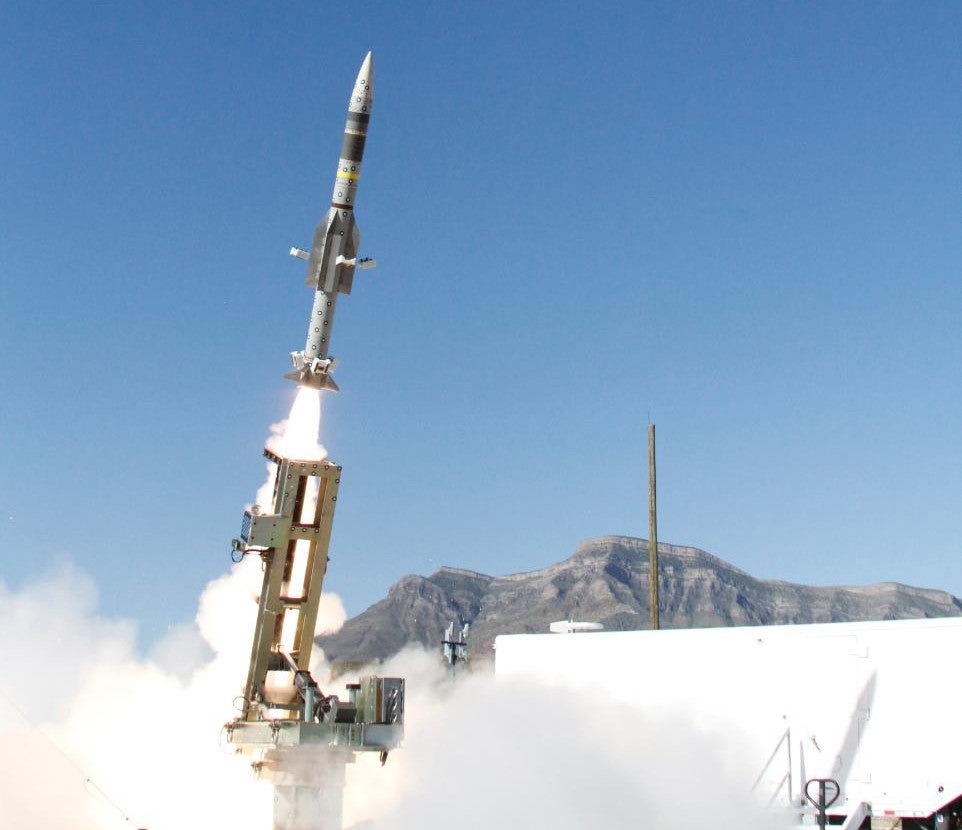
The US Congress is making the US Army buy 2-off the shelf Iron Dome batteries but the US Army has deemed the system incapable of fully integrating (Fire Control Level connectivity) with its integrated fire control network so it is going to break up the system and ask Rafael to enter the Tamir missile in competition for its long term requirements (18 systems requirement in total so 16 batteries still outstanding) to be integrated with US Radar (X-band), and US fire control network and command and control system (IFCN & IBCS) with full any-sensor-any-shooter connectivity.
Here's the first Iron Dome hardware getting ready to be delivered to the US Army -
US Army Offers Glimpse Of New Low-Cost Surface-To-Air Missile

The US Congress is making the US Army buy 2-off the shelf Iron Dome batteries but the US Army has deemed the system incapable of fully integrating (Fire Control Level connectivity) with its integrated fire control network so it is going to break up the system and ask Rafael to enter the Tamir missile in competition for its long term requirements (18 systems requirement in total so 16 batteries still outstanding) to be integrated with US Radar (X-band), and US fire control network and command and control system (IFCN & IBCS) with full any-sensor-any-shooter connectivity.
Here's the first Iron Dome hardware getting ready to be delivered to the US Army -
Re: US military, technology, arms, tactics
That thing certainly looks like our jolly ole QRSAM
https://en.m.wikipedia.org/wiki/QRSAM#/ ... opped).jpg

https://en.m.wikipedia.org/wiki/QRSAM#/ ... opped).jpg

Re: US military, technology, arms, tactics
It is different. Given the program requirements (high magazine load outs) I seriously doubt that it will have a larger diameter than the AMRAAM for example. The PAC-3 is 10" dia so the program goal of a more magazine optimized weapon than it would probably mean 7" or so. Not sure what the QRSAM dia is but I thought it is larger than the Astra? The US Army has been developing this thing for a greater part of a decade as an internal Army lab led effort but given some of the other more promising SHORAD options (like Lockheed's MSI for example) I don't think this will eventually win unless the rest of the program (seeker and GNC) has made good progress in lowering the cost. Also not sure, from the image, whether the US Army envisions ACM's there in the front end. Could very well be for the final design since they had a few ex-Lockheed consultants initially on the project back 3-4 years ago though their production partners are different and smaller OEMs and 2nd tier suppliers.hnair wrote:That thing certainly looks like our jolly ole QRSAM
https://en.m.wikipedia.org/wiki/QRSAM#/ ... opped).jpg
The "shoot-off" is next year and although not confirmed it is quite likely that Rafael's Tamir (with Raytheon as a program partner since they produce tamir components), this internal US Army design, and Lockheed's MSFI will probably compete. Perhaps something from Boeing as well.
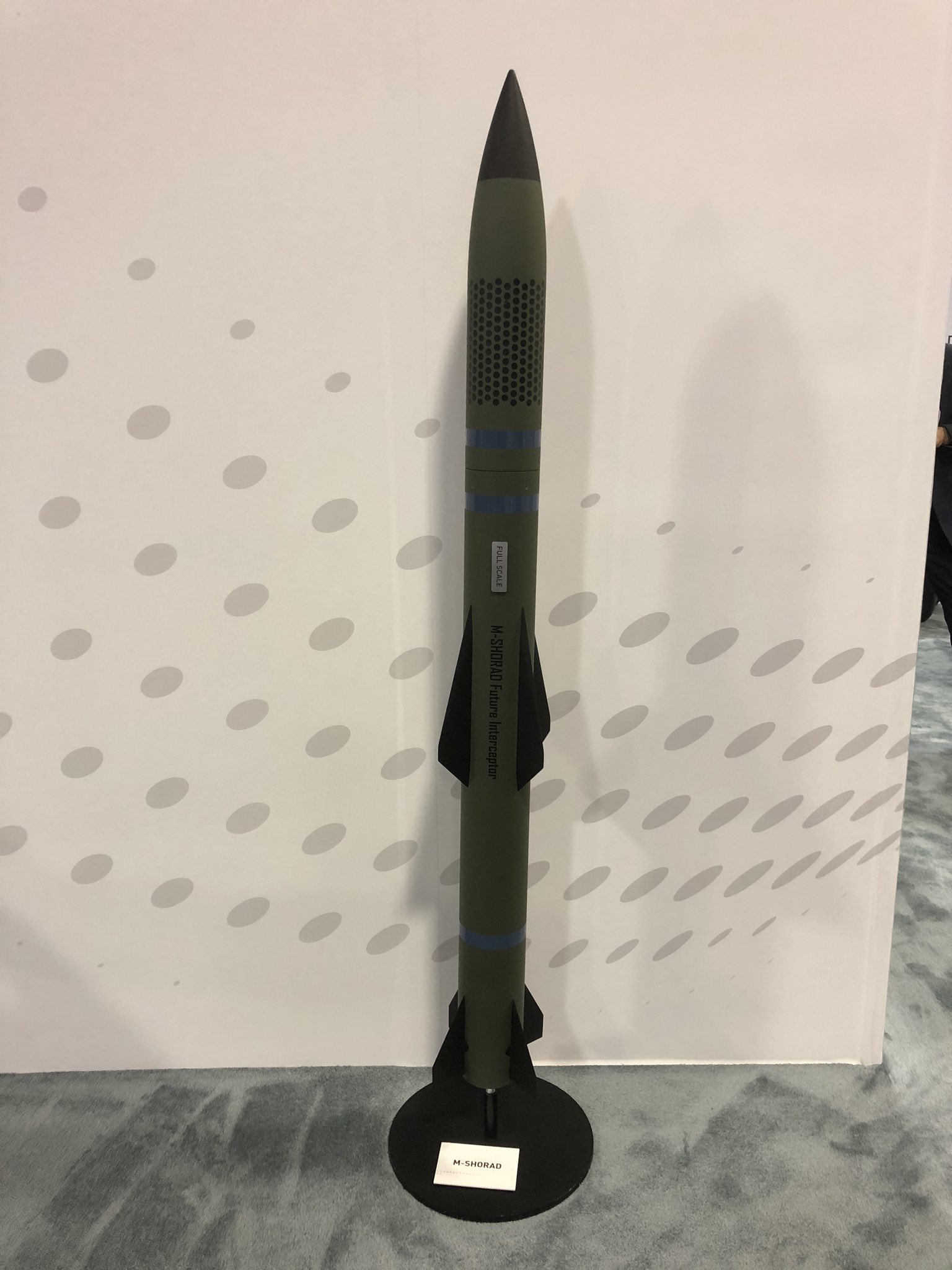
Re: US military, technology, arms, tactics
I am sure. And expensive too, despite "low cost" claims, if it is to replace Patriots and shoot down everything from MBRLs to ATACMs class .brar_w wrote: It is different.
But it looks similar and that was my only point
Re: US military, technology, arms, tactics
The target set is subsonic cruise missiles and MALE drones. The whole point is to have the PAC-3 family go after the SRBM-MRBM threat, and the advanced cruise missile threat with this family of interceptors (there may be 2 one optimized around CRAM and the other around CMD) to focus on the lower cost threats at extended ranges against low flying targets.. Essentially what the upgraded Tamir interceptors are being acquired for. Rafael and Raytheon have invested in improving the tamir's agility for the US Army requirements since they want it as a low-cost cruise missile killer instead of a rocket and artillery killer that Israel uses it for. They (upgraded Tamir) go for around $150k per round so I assume that it will have to be in the same ballpark though since it will likely outrange the Tamir and feature an RF seeker the Army may be willing to pay a slight premium for it. Lockheed’s design looks like the one to go in for. Hit to kill with ACMs so will be longer ranged and much much more agile. And at 6” it will allow for a larger magazine.hnair wrote:I am sure. And expensive too, despite "low cost" claims, if it is to replace Patriots and shoot down everything from MBRLs to ATACMs class[/u]brar_w wrote: It is different.
This particular interceptor will be the 6th layer of SHORAD capability and outside of the PATRIOT family of launchers and systems -

Last edited by brar_w on 15 Nov 2020 04:30, edited 2 times in total.
Re: US military, technology, arms, tactics
Link01:

Link02

Link02
Link03One satellite per week. That’s what the Pentagon wants industry to provide under its plans to orbit seven new constellations — each with a different function — by the end of 2020.
The Space Development Agency Tuesday announced seven of the new constellations it plans to build. These include:
Transport: reliable communications between U.S. forces around the world.
Battle Management: to provide command and control.
Tracking: to find and track enemy missiles, including hypersonic ones.
Custody: to keep tabs on enemy ground launchers and other mobile targets.
Navigation: to augment or replace GPS.
Deterrence: to deter hostile action in “deep space” — i.e., from geosynchronous Earth orbit to the moon.
Support: to connect ground-based satellite systems, including launchers.
Re: US military, technology, arms, tactics
^^ The Missile defense layer aside, the LEO based BLOS-Link-16 is just going to be a total game-changer given how many L16 terminals exist out there on aircraft and ground vehicles. With L16 headed towards a single aperture dual band (L/S) architecture in the future this will further increase both the net-enabled assets in theater and the individual assets ability to access data via lower latency links.
Viasat is delivering this capability first but others will surely follow:
Viasat is delivering this capability first but others will surely follow:
Many folks (even some reporters) were mocking the then US CSAF in 2016ish when he said that the mid-long term future AWACS/JSTARS replacement is a space constellation covering battle management, air-dominance, and missile defense mission sets. These pieces are now coming together relatively fast almost at commercial scale.CARLSBAD, Calif., May 22, 2019 -- Viasat Inc. (NASDAQ: VSAT), a global communications company, announced today it has been awarded a contract by the Administrator of the Space Enterprise Consortium, under the Air Force Research Laboratory Space Vehicles XVI program, to deliver and test the first-ever Link 16-capable LEO spacecraft. Leveraging the Company’s leadership in satellite innovation and military communications, the Viasat-designed spacecraft is intended to enhance warfighters’ situational awareness by extending the range of Link 16 networks – using a constellation of satellites to provide greater access to Link 16 capabilities in contested or congested environments.
Under the XVI program, Viasat will become the first company to prototype and test space-based Link 16 capabilities compatible with fielded U.S. Air Force, Army, Navy, Marine Corps, and Special Operations Link 16-enabled platforms, including ground vehicles, aircraft, maritime vessels, and dismounted users. The XVI program is a key step towards making a global Link 16-enabled LEO satellite constellation, transforming Link16 from a Line-of-Sight (LOS) to a Beyond Line-of-Site (BLOS) network, providing U.S. and allied military forces with ubiquitous, secure, high-speed and resilient communications necessary to improve the common operating picture across the global battlespace.
Viasat’s Link 16-capable LEO satellite is designed to fit the Viasat Hybrid Adaptive Network (HAN) satellite communications (SATCOM) concept. The HAN architecture will allow users to operate across commercial and government SATCOM networks and multiple orbital regimes, creating an end-to-end multi-layered solution resilient to network congestion, intentional and unintentional interference and cyber threats – even in highly-contested environments. The Link 16-capable LEO satellite will allow Link 16 networks to leverage the resilient, global connectivity capabilities of the HAN and share information with other warfighters, anywhere in the world.LINK
Re: US military, technology, arms, tactics
What will be the per shot cost for this missile system?brar_w wrote:Likely to compete with the Iron Dome's Tamir interceptor in the "shoot-off" scheduled for next year....
Last edited by Rakesh on 16 Nov 2020 01:40, edited 1 time in total.
Reason: Please DO NOT quote an entire post when replying. Post Edited.
Reason: Please DO NOT quote an entire post when replying. Post Edited.
Re: US military, technology, arms, tactics
Depends upon the seeker (its attributes) they put in it. They've consistently shaved away the "higher cost" requirements out of this program. It will compete against the likes of Tamir, which, upgraded to meet this threat set goes for $150K-$200K based on the initial lot of contracts Israel secured from the US Army. If one assumes a 25-30% premium for an RF seeker then you can put the cost in the $200-$300K as a good ballpark for what this program is likely to pay. Keep in mind that this is an internal US Army design study leveraging their in house design and industry help in production and other tech borrowed from other S&T programs. It is not the only missile that will have to compete in the shoot-off next year. Lockheed has an extremely small, and agile hit-to-kill missile that it has already flown and of course Rafael/Raytheon have the very mature and proven Tamir and could offer an upgrade path that puts a new RF seeker on it over time. The Tamir has probably seen a seeker upgrade (different cruise missile flight profile to rockets) and is more agile than the baseline variant which has more than doubled its cost over the baseline CR&M round but it is still likely to define what "competitive" price looks like for this. Of course a better value proposition could land them at slightly higher cost for a little better performance. But the point is still to field an affordable interceptor that can take out fairly lowish cost cruise-missiles and UAV's. It isn't an anti-swarm weapon but something that sits atop of your standard Stingers and high-energy lasers/HPM's and below the very costly BMD optimized interceptors like the PAC-3. Right now, the US Army has nothing in that space and needs to fill that void.darshhan wrote:What will be the per shot cost for this missile system?
The layered defense against cruise missiles and UAS is basically a scaling effort. The first layer is a 30 mm gun on mobile units that are equipped with EO/IR sensor and 30 mm Prox Fuze airburst munitions. The next layer introduces two distinct V&SHORAD systems. One is the 60 kW High Energy Laser mounted on a Stryker, and the other is its kinetic counterpart equipped with multi-missile launchers that currently accommodate Stingers, Hellfires, and can also take Aim-9's if required. A future 15 km interceptor is also coming to them as is the Stinger missile replacement which just kicked off. The layer 2 HEL is capable of defeating RAM threats and UAV's, while the kinetic units defeat UAS threats on the move. Both are equipped with 360 degree AESA radars and EO/IR. The next layer is the longer ranged SHORAD layer comprising of a 300 kW High Energy Laser, and this new AD battery. It will defeat Cruise missiles, UAS, and RAM threats (primarily with the laser) at longer ranges. These layered composite units are scalable and will co-exist with the PATRIOT units and are capable of either operating within these battalions, or independently. All but the smallest layer use a common fire-control-network (IFCN) so each sensor can get fire control connectivity with each shooter, irrespective of which system we are talking about here.
